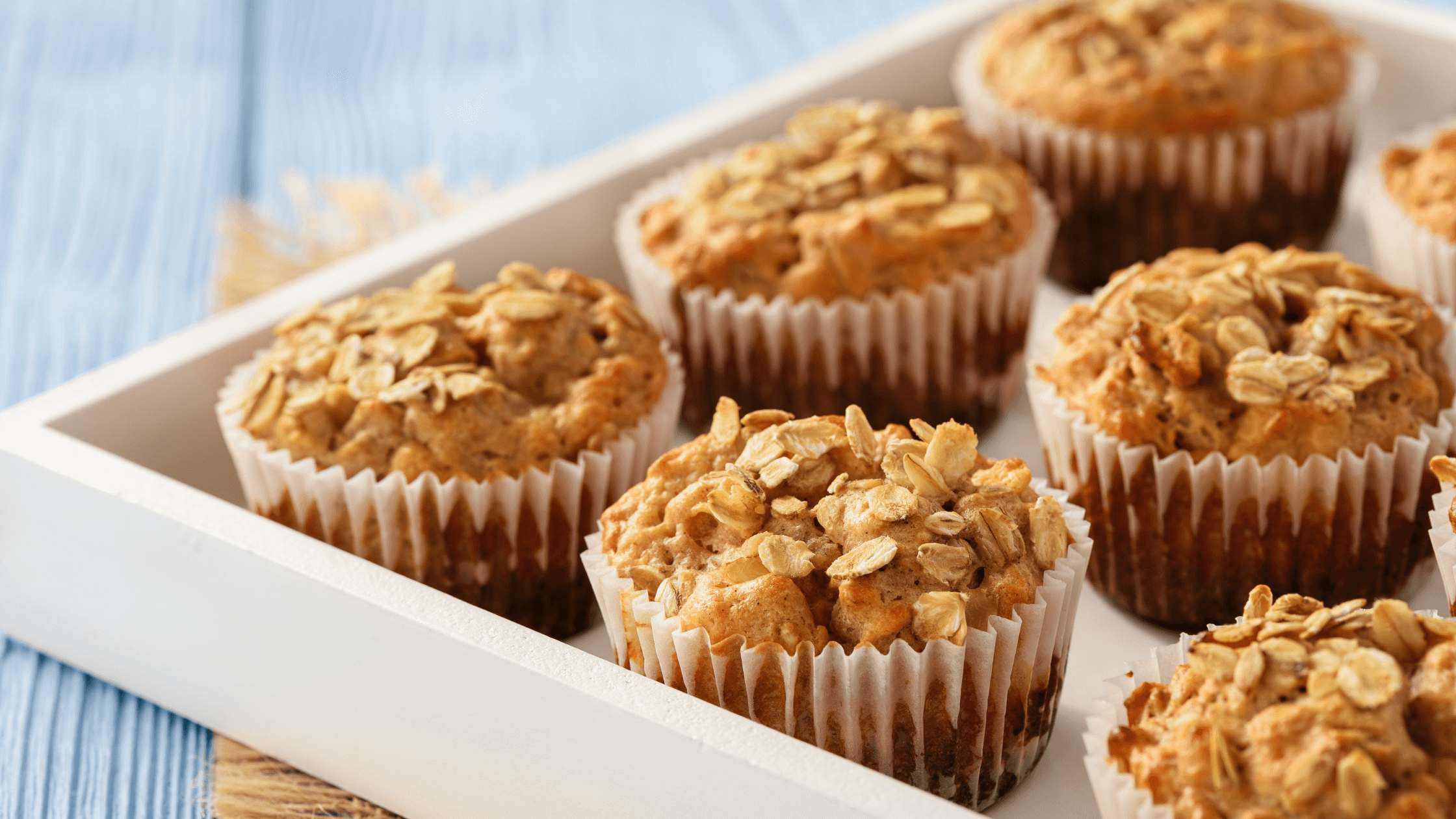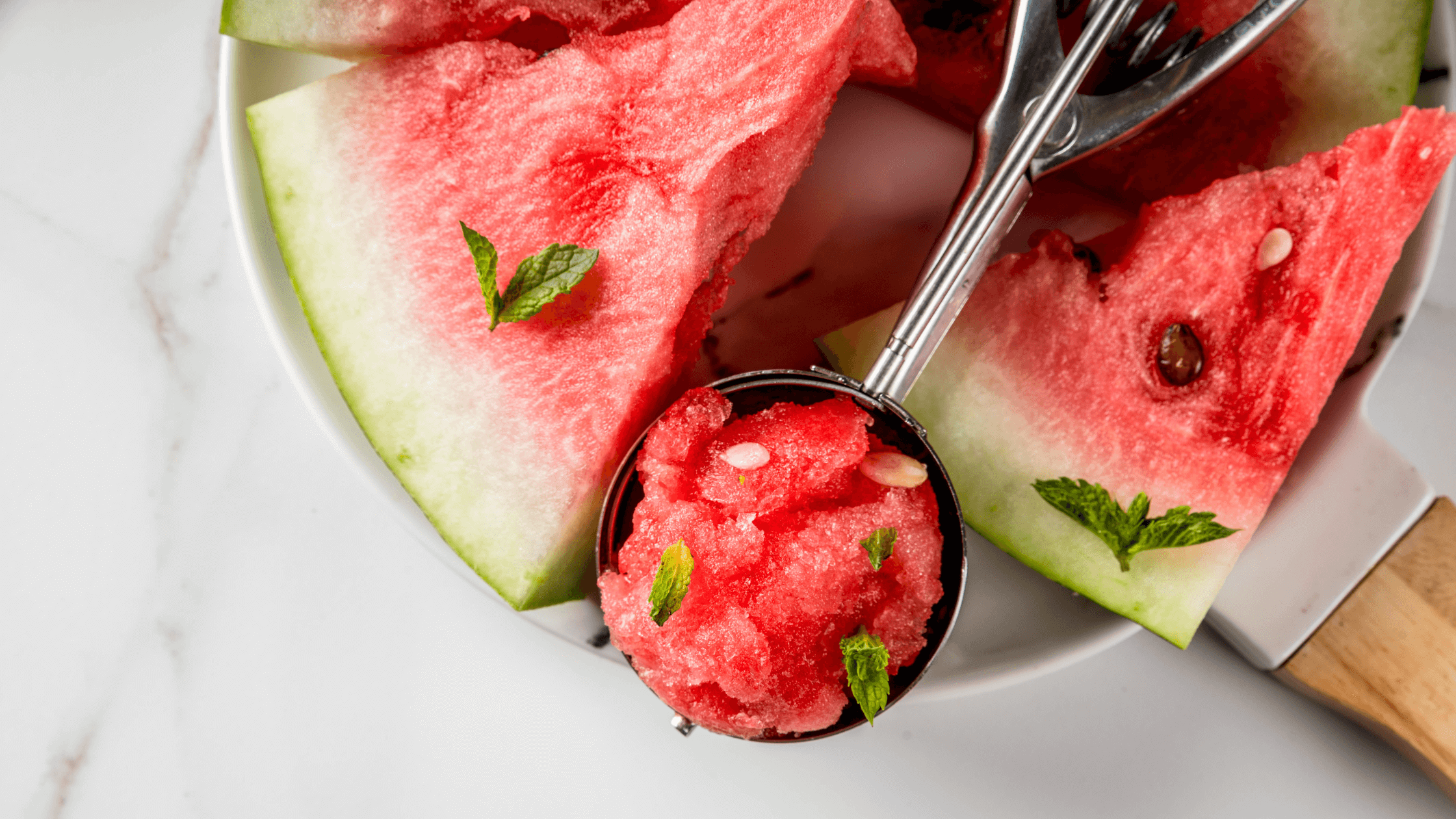While there's a lot of fearmongering about them in the media, the truth is that carbohydrates are an important part of our diet, providing energy, fiber, and essential nutrients like B vitamins, iron, and magnesium. Carbohydrates are composed of multiple monosaccharides (simple sugars) joined together, but what they're called depends on their complexity.
Oligosaccharides are short-chain carbohydrates of between 3 and 10 monosaccharides joined together and are found naturally in legumes, onions, garlic, and wheat. They're poorly absorbed in the small intestine, with much of their breakdown occurring due to bacterial fermentation by your gut microbes.
In contrast, polysaccharides are long-chain carbohydrates of more than 10 monosaccharides joined together, often forming chains of hundreds or thousands of linked sugar residues. They have different physicochemical properties than oligosaccharides and can act as energy storage (like in the case of starch and glycogen) or structural support (like in the case of cellulose).
Interested in learning more about oligosaccharides vs. polysaccharides? Read on to get the lowdown on their unique properties, food sources, health benefits, and biological processes they influence.
What Are Oligosaccharides?
Oligosaccharides are a type of carbohydrate made up of between 3 and 10 monosaccharides linked together by glycosidic linkages. While they're considered complex carbohydrates, they're less complex than polysaccharides such as starch.
Common types of oligosaccharides include fructo-oligosaccharides (FOS), which are chains of fructose sugars. Fructans are a type of FOS. Another common type of oligosaccharide is galacto-oligosaccharides (GOS), which are chains of galactose molecules. Raffinose is a type of GOS.
Humans lack the enzymes needed to fully digest oligosaccharides, which results in them reaching the large intestine intact. However, this doesn't diminish their potential benefits to human health. Oligosaccharides serve as food for your gut microbiome (the community of bacteria, yeasts, fungi, viruses, and more inhabiting your digestive tract), making them an important component of maintaining a healthy gut.
Oligosaccharides occur naturally in many foods. GOS are common in legumes (like lentils, chickpeas, and kidney beans), while fructans are common in foods like wheat, onions, and garlic. Human breast milk also contains oligosaccharides known as human milk oligosaccharides, which play a critical role in infant gut health and immune system development.

Health Implications of Oligosaccharides
Oligosaccharides offer many potential health benefits and have high nutritional value, but they can also cause digestive discomfort in some individuals.
One of the significant health benefits of oligosaccharides is their role as prebiotics. Prebiotics are compounds that feed your beneficial gut bacteria, such as Bifidobacteria and Lactobacilli. This is important because a well-balanced gut microbiome supports digestion, immune function, and overall well-being.
Oligosaccharides support gut health in part due to their fermentation by gut bacteria in the colon. This produces metabolic byproducts called short-chain fatty acids (SCFAs), which nourish the cells of your colon and may help reduce inflammation. Overall, SCFAs contribute to a healthy gut environment and may lower your risk of developing colorectal diseases like inflammatory bowel disease (IBD) and colorectal cancer.
Oligosaccharides also support the immune system, partly by reducing harmful bacteria growth. Since an overabundance of bad bacteria can weaken the gut barrier, preventing their growth can help the integrity of the gut barrier, which is a key component of a healthy immune system. The human milk oligosaccharides in human breast milk help develop a baby's immune system.
Finally, oligosaccharides may have metabolic benefits. Some studies in animals suggest that they can help regulate blood sugar levels. Plus, a recent study in humans with overweight and obesity found that eating oligosaccharides was associated with significant weight loss. This may be due to their slow rate of digestion, which can contribute to feelings of satiety, making it easier to reduce overall calorie intake.
However, despite the many health benefits of oligosaccharides, there are some potential drawbacks. Many oligosaccharides (such as fructans and GOS) are FODMAPs. FODMAPs stands for Fermentable Oligosaccharides, Disaccharides, Monosaccharides, and Polyols. Since they're poorly absorbed in the small intestine and instead get fermented by the gut bacteria, FODMAPs can cause excess gas, bloating, and changes in bowel movements in susceptible individuals with a FODMAP intolerance, such as those with irritable bowel syndrome (IBS).

What Are Polysaccharides?
Polysaccharides are complex carbohydrates made up of long chains of monosaccharides joined together by glycosidic linkages. These complex molecules serve several important functions, including cell signaling, energy storage, and structural support. Their specific properties depend on which sugars they're made up of and how those sugars are joined together.
When it comes to structure, polysaccharides are made up of more than 10 monosaccharides joined together by glycosidic linkages, although often the monosaccharides number in the hundreds or thousands. They can be linear (straight chains) or more complex molecules with a branched structure. Whether or not they're made of straight or branched chains affects their digestibility and function.
There are two main types of linkages in polysaccharides. The first are called alpha-glycosidic linkages. These bonds are found in important polysaccharides like starch and glycogen and are easily digested by human enzymes.
The second type of linkages are called beta-glycosidic bonds. They're found in polysaccharides like cellulose (found in plant cell walls). While human enzymes cannot break down beta-glycosidic bonds into simple sugars, they're important for structural support and are a source of dietary fiber.
There are many types of polysaccharides, which can be classified based on their function in living organisms.
Starch is a type of storage polysaccharide found in plant foods like potatoes, grains, and legumes. There are two primary forms of starch—amylose (unbranched) and amylopectin (branched). The glycosidic linkages in amylose and amylopectin are digestible by humans and provide a long-lasting energy source.
In contrast, glycogen is a highly branched polysaccharide made up of glucose molecules stored in the liver and muscle of animals. It's broken down into glucose molecules to provide a quick burst of energy when the glucose available from recent meals has run out.
Structural polysaccharides include cellulose, which is a key component of plant cell walls and is indigestible by humans. However, cellulose acts as dietary fiber and supports gut health by promoting regular bowel movements and feeding your good gut bacteria.

Health Implications of Polysaccharides
Like oligosaccharides, polysaccharides have high nutritional value and play an important role in human health. They provide energy, digestive benefits, and structural support.
One of the main health benefits of polysaccharides is sustained energy release. Storage polysaccharides like starch provide a steady supply of energy. These complex carbohydrates, like whole grains, legumes, and starchy vegetables, help maintain stable energy levels compared to refined carbs. This is because whole grains contain more fiber than refined carbs, which slows the digestion and release of glucose into the bloodstream and prevents blood sugar spikes.
Another key benefit of polysaccharides is their effect on digestive health. Dietary fibers like cellulose, hemicellulose, and pectin help promote regular bowel movements in people with constipation. Prebiotic polysaccharides like resistant starch (which is a type of starch that resists digestion in the small intestine, instead acting like fiber to promote gut health and support blood sugar control) feed your good gut bacteria, promoting a healthy gut microbiome.
Soluble fiber like beta-glucans and pectin also help regulate blood sugar and cholesterol levels. These types of fiber form a gel-like substance in the gut, slowing down the absorption of glucose and improving blood sugar control. Soluble fiber-rich polysaccharides like beta-glucan also help lower LDL (bad) cholesterol by reducing the absorption of cholesterol and bile acids (which contain cholesterol) in the gut. Finally, clinical trials have demonstrated that beta-glucans may help modulate the immune response.

Key Differences Between Oligosaccharides and Polysaccharides
Oligosaccharides and polysaccharides are both carbohydrates, but they differ in several key aspects. The table below highlights their main differences.
Comparison of Oligosaccharides and Polysaccharides
| Feature | Oligosaccharides | Polysaccharides |
|---|---|---|
| Structure & Complexity | Composed of 3 to 10 sugar units; lower molecular weight molecules. | More complex molecules composed of more than 10 sugar units (often in the hundreds or thousands); higher molecular weight molecules. |
| Common Examples | Fructo-oligosaccharides (e.g., fructans) and galacto-oligosaccharides (e.g., raffinose). | Starch, glycogen, cellulose, pectin, beta-glucan. |
| Digestion & Absorption | Resists digestion in the small intestine; mostly fermented by microbes in the colon. | Those with alpha-glycosidic bonds are broken down into monosaccharides (e.g., starch, glycogen), while those with beta-glycosidic bonds resist digestion and act as dietary fiber (e.g., cellulose, beta-glucan). |
| Physiological Role | Supports the gut microbiome and digestive health by acting as a prebiotic. | Provides energy (e.g., starch, glycogen) and acts as structural elements (e.g., cellulose). Certain polysaccharides also act as dietary fiber. |
| Impact on Health | Improves gut health, enhances immune function (through SCFA production); may cause bloating and gas in people with a FODMAP intolerance. | Supports healthy digestion, helps with blood sugar regulation, improves heart health (some fibers, such as beta-glucan, reduce cholesterol). |
| Natural Sources | GOS: Lentils, chickpeas, kidney beans, cashews, pistachios, almonds, beets, green peas, turnips, oat milk. FOS: Wheat, barley, rye, onions, garlic, leeks, asparagus, Brussels sprouts, watermelon, ripe banana, beans, pistachios, cashews, chicory root. | Whole grains (e.g., wheat, barley, rice, quinoa, farro, millet), starchy vegetables (e.g., potatoes and sweet potatoes), fruits, vegetables. |
The bottom line? Oligosaccharides play a vital role as prebiotics (food for your good gut microbes), while polysaccharides serve energy storage and structural roles, as well as promoting regular digestion. Despite their different nutritional properties, both play an important role in human health.
Dietary Sources and Recommendations
It's important to eat a variety of food products containing oligosaccharides and polysaccharides. Here are some food sources of both types of carbohydrates.
Sources of Oligosaccharides
GOS:
- Almonds
- Beets
- Bitter melon
- Black beans
- Cashews
- Chickpeas
- Green peas
- Kidney beans
- Lentils
- Navy beans
- Oat milk
- Pine nuts
- Pistachios
- Pinto beans
- Soft tofu
- Soybeans or edamame
- Other soy-based products like soymilk made from whole soybeans
- Split peas
- Taro
- Tuscan kale
- Turnip
Fructans:
- Artichoke
- Asparagus
- Banana (ripe)
- Barley
- Black beans
- Brussels sprouts
- Cabbage
- Cashews
- Chicory root
- Garlic
- Inulin
- Leeks (the white part)
- Lima beans
- Navy beans
- Onions
- Persimmon
- Pistachios
- Red kidney beans
- Rye
- Scallions (the white part)
- Shallots
- Spelt
- Watermelon
- Wheat (bread, pasta, etc.)

Tips for incorporating oligosaccharides into your diet:
- Start slowly. Oligosaccharides, especially those found in legumes, wheat, onion, and garlic, can cause gastrointestinal distress when eaten in large portions. Start with a small portion and gradually increase your intake to a comfortable level.
- Eat canned and rinsed chickpeas and lentils. The canning process removes some of the oligosaccharides, so the end food products retain fewer GOS. This may make you more likely to tolerate the GOS in canned beans and lentils.
- Use digestive enzymes. Digestive enzymes like FODZYME break down oligosaccharides (GOS and fructans) and lactose (the naturally occurring sugar found in dairy) as soon as they're added to your food. These enzymes may reduce the digestive side effects of eating oligosaccharides by breaking them down for you.
Sources of Polysaccharides
Starch:
- Amaranth
- Arrowroot
- Bananas (unripe/green)
- Barley
- Corn
- Chickpeas
- Lentils
- Millet
- Oats
- Peas
- Plantains
- Potatoes (white, red, sweet potatoes)
- Quinoa
- Rice
- Sorghum
- Tapioca
- Wheat (bread, pasta, tortillas, etc.)
- Yams

Cellulose:
- Root vegetables (carrots, parsnips, potatoes, etc.)
- Leafy greens (lettuce, kale, Brussels sprouts, etc.)
- Legumes (black beans, chickpeas, kidney beans, lentils, etc.)
- Celery
- Pears (especially the skin)
- Apples (especially the skin)
- Whole grains (wheat, wheat bran, barley, etc.)
- Flax seeds
Beta-Glucan:
- Oats
- Barley
- Rye
- Mushrooms (reishi, shiitake)
- Nutritional yeast
- Seaweed
Pectin:
- Apples (especially skins)
- Apricots
- Bananas (unripe/green)
- Blackberries
- Carrots
- Cherries
- Citrus fruits (oranges, lemons, limes, grapefruit—mostly in the peel and white pith)
- Cranberries
- Grapes
- Guavas
- Peaches
- Pears
- Plus
- Raspberries
- Strawberries
- Tomatoes

Tips for incorporating polysaccharides into your diet:
- Choose whole grains: Whole grains like brown rice, quinoa, whole wheat, barley, and oats are digested more slowly than refined grains, which reduces their impact on blood sugar levels and helps provide lasting energy.
- Increase your intake of resistant starch: Eat cooled and reheated potatoes, rice, or pasta to increase your intake of resistant starch, which helps support gut health and reduces blood sugar spikes.
- Enjoy a variety of fruits and vegetables: To increase your intake of fibrous polysaccharides like cellulose, eat a variety of different fruits and vegetables (if possible, leave the skin on, as the skin contains high amounts of fiber).
Choosing the Right Carbohydrates and How FODZYME Can Help
Both oligosaccharides and polysaccharides have essential roles in a balanced diet and overall well-being. While polysaccharides offer sustained energy release, oligosaccharides act as prebiotics, nourishing your good gut microbes. However, some people struggle to digest certain oligosaccharides (like GOS and fructans), leading to uncomfortable symptoms like gas, bloating, abdominal discomfort, and changes in bowel movements. This is particularly common in those with IBS or FODMAP sensitivities.
That's where FODZYME comes in. This novel digestive enzyme supplement helps break down problematic FODMAPs (like lactose, GOS, and fructans), allowing you to enjoy your favorite oligosaccharide-rich foods without discomfort. If you want to support your gut while enjoying a variety of nutritious foods, check out FODZYME here.
